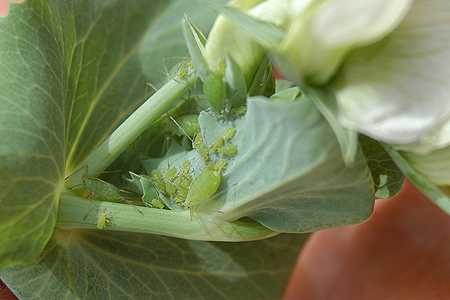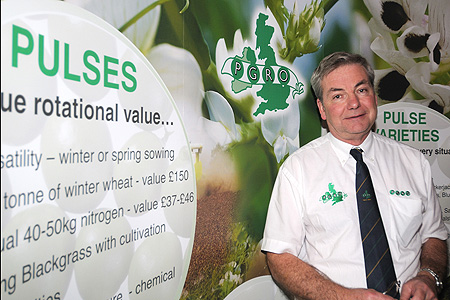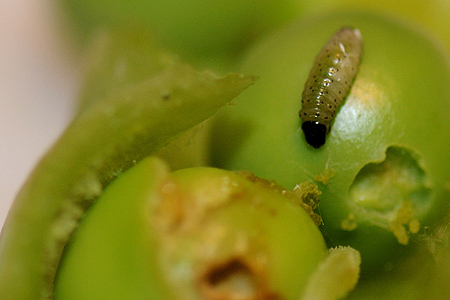
A period of warm, dry weather has seen aphid numbers on the rise and migrating into susceptible crops. Reporting on the Syngenta Specialist Crops Community website (www.syngenta-crop.co.uk), agronomists warn growers will need to act quickly to stop damage or spread of viruses.
Early summer Pea Aphid invasion in pea crops (above) can cause yield-robbing physical crop damage and spread virus, whilst potato seed crops remain susceptible to virus transmission, warn agronomy experts.
Anthony Biddle (above) at the PGRO says if more than one aphid can be found per four plants on peas, then growers should spray to avoid pea enation mosaic virus (PEMV) transmission and direct feeding damage.
"Spraying with Aphox should sort the problem out. But, if you are combining Pea moth control (larvae damage pictured above), add some Hallmark Zeon or switch to Dovetail which contains both actives," he advises.

Pea moth thresholds were recently breached in the east and Essex, and high catches are predicted elsewhere as the weather warms. "With most pea growers looking for quality, it’s an important pest to control," adds Dr Biddle The PGRO pea moth telephone service on 01780 783099 can provide specific information about spray dates.
Vining pea growers should also watch out for Pea Midge. "We have seen the first emergence in north Cambridgeshire and this will be closely followed by Yorkshire. Sprays need applying at the enclosed bud stage, so later drillings will be most prone," he adds.
Potato growers should keep a close eye out for aphids, which are poised to migrate into crops during warmer, drier weather, warns SAC potato agronomist John Sarup.

Peach-potato aphids, the most important vector of potato viruses, including potato leaf roll virus and PVY, A and V, and have already been found in yellow water traps on the Yorkshire Wolds, he reports.
"Numbers and species need to be monitored carefully, either by using water traps or checking the status in your area by using the Potato Council/FERA aphid monitoring service available through the Potato Council website."
Other species need watching too - many non-colonising aphid species, particularly bird cherry-oat aphids, carrot willow aphids and rose-grain aphids can also transmit PVY, as well as PVA and V.
Seed growers should use a protectant programme to prevent aphids landing on the crop, spraying every seven days from rapid canopy expansion onwards where there’s risk of infection.
"Actara works well and controls resistant aphids, plus a tank mix with Hallmark Zeon adds aphid repellent benefits," he advises. "But you can only use two neonicotinoids in a seed crop per season - or one in ware crops - so you will have to use other chemistry at some point to partner Hallmark." On ware crops, spraying should commence when a significant increase in aphid numbers on leaves is recorded, Mr Sarup advises.
Syngenta Insecticides Technical Manager, Michael Tait, added that when using Actara for its persistent aphid control, it should be applied outside the potato flowering window. "When using any foliar insecticide in crops where bees may forage, follow the stewardship guidelines as prescribed by the http://www.britishbee.org.uk/spray_liaison_officers.php and contact your local bee liaison officers," he advises.
Potato and vegetable crop growers, including peas and beans, can gain more crop specific information and pest alerts, along with advice and guidance from agronomists, Syngenta crop specialists and the experiences of other growers on the dedicated Syngenta Specialist Crops Community, by registering free at www.syngenta-crop.co.uk/community.aspx
